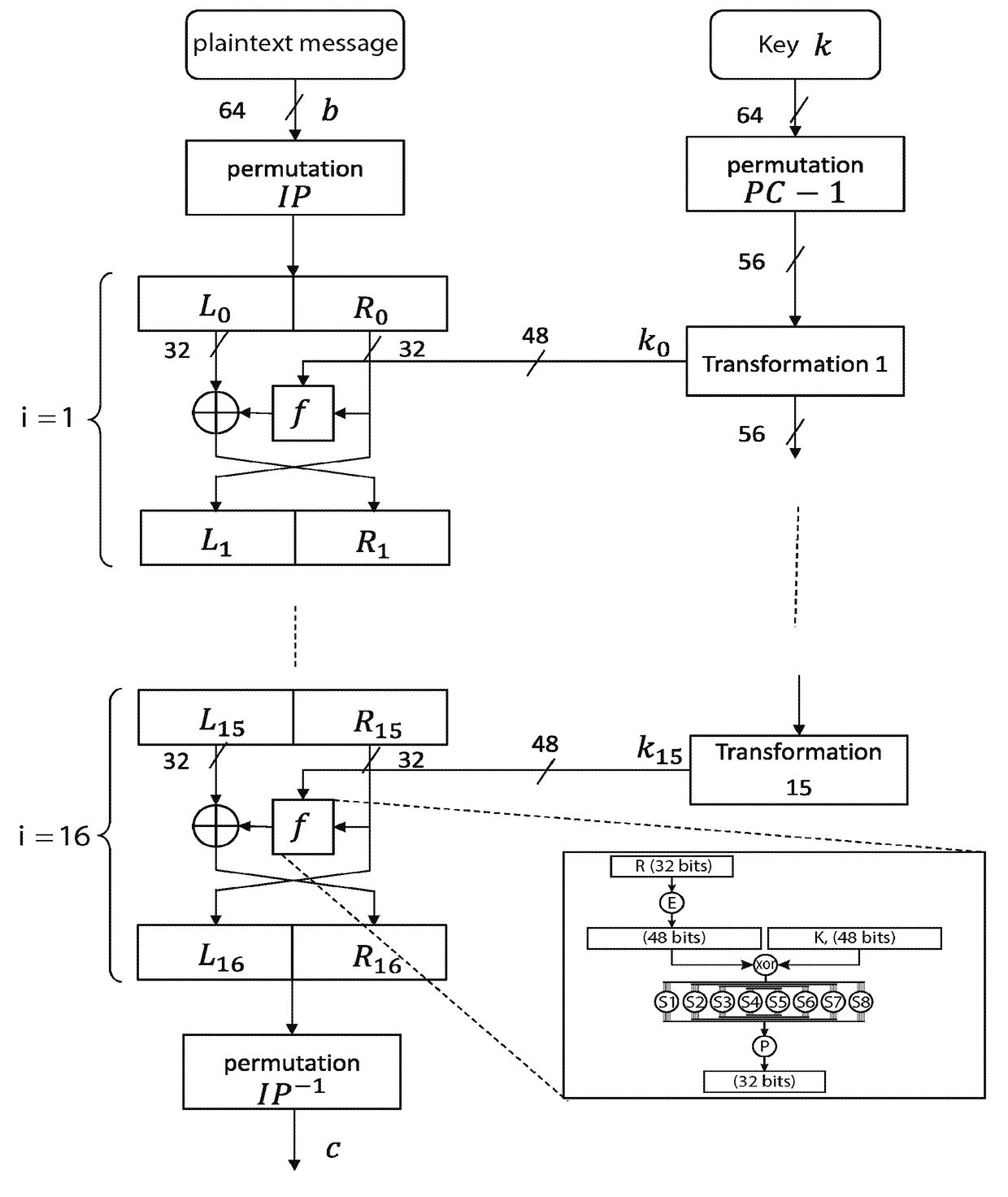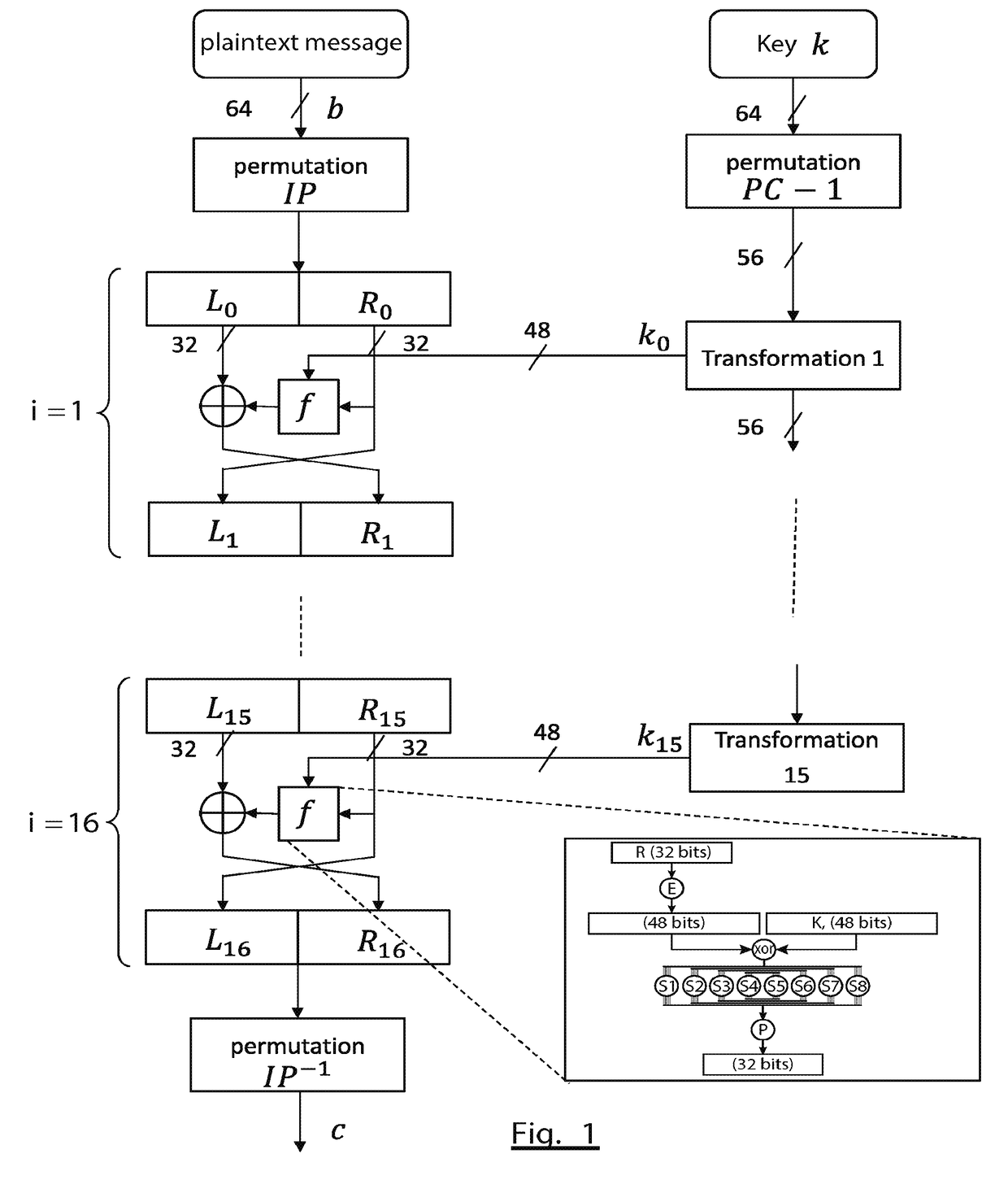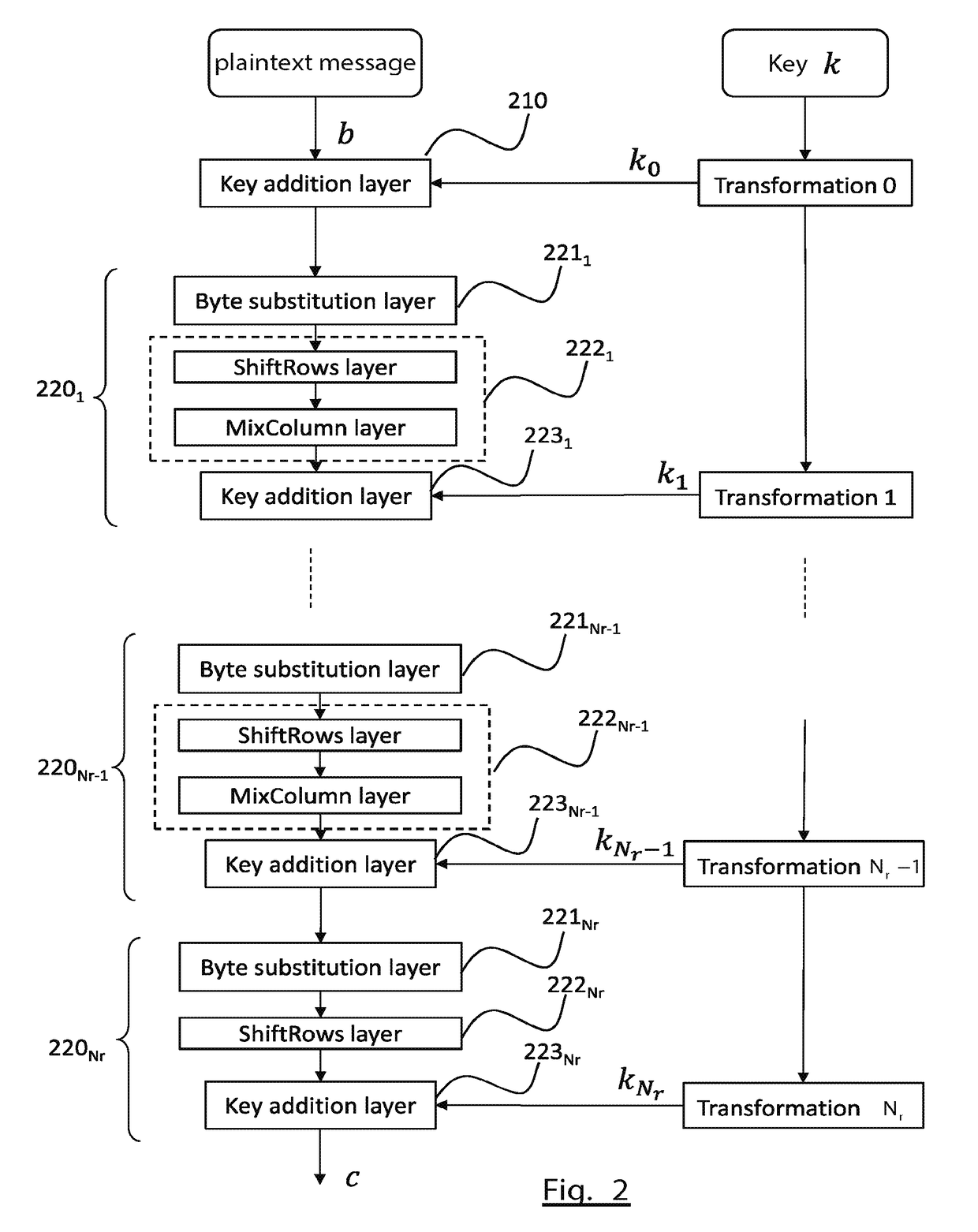Method of encryption with dynamic diffusion and confusion layers
a layer and diffusion layer technology, applied in the field of symmetrical cryptography, can solve the problems of fa, side channel attack, fault attack, sca, etc., and achieve the effect of avoiding fa, fa, or side channel attack, and avoiding sca
- Summary
- Abstract
- Description
- Claims
- Application Information
AI Technical Summary
Benefits of technology
Problems solved by technology
Method used
Image
Examples
first embodiment
[0075]More precisely, FIG. 4 shows the general structure of an encryption method according to the invention.
[0076]The encryption method uses a secret key, k, for encrypting a plaintext message or block to be encrypted, b. It moreover initialises a counter 430 from a seed shared between Alice and Bob.
[0077]The output of the counter 430 is combined with the key k, the combination thus obtained being the subject of a non-invertible transformation 440 such as a cryptographic hash function, for example the SHA-3 function.
[0078]According to a first variant, the combination may be obtained by means of a concatenation of the bits of the key (or of only some of them) and bits of the output word of the counter (or only some of them). The result of the concatenation will be denoted k∥CTR where CTR is the output of the counter.
[0079]According to a second variant, the combination can be obtained by means of a sum (exclusive OR) of the key and of the output word of the counter, that is to say k⊕C...
second embodiment
[0138]FIG. 11 shows an example of stream encryption according to the invention.
[0139]The encryption method is here implemented by means of a linear feedback shift register (LFSR) 1110, and a finite state machine (FSM) 1180.
[0140]The shift register is initialised by means of an initial value (here a 16-bit word) giving the content of the shift register. Several takes from the shift register feed the finite machine.
[0141]The finite state machine comprises a plurality of registers R1, R2, R3, (here of size 32 bits) intended to store intermediate results. The operations ⊕ signify respectively addition operations in GF(2) and GF(232).
[0142]The word contained in the register R1 is subjected to a first substitution operation 11211 and a first diffusion operation 11221. The word contained in the register R2 is subjected to a second substitution operation 11212 and a second diffusion operation 11222. Each substitution operation uses a corresponding substitution table and each diffusion opera...
PUM
 Login to View More
Login to View More Abstract
Description
Claims
Application Information
 Login to View More
Login to View More - R&D
- Intellectual Property
- Life Sciences
- Materials
- Tech Scout
- Unparalleled Data Quality
- Higher Quality Content
- 60% Fewer Hallucinations
Browse by: Latest US Patents, China's latest patents, Technical Efficacy Thesaurus, Application Domain, Technology Topic, Popular Technical Reports.
© 2025 PatSnap. All rights reserved.Legal|Privacy policy|Modern Slavery Act Transparency Statement|Sitemap|About US| Contact US: help@patsnap.com



